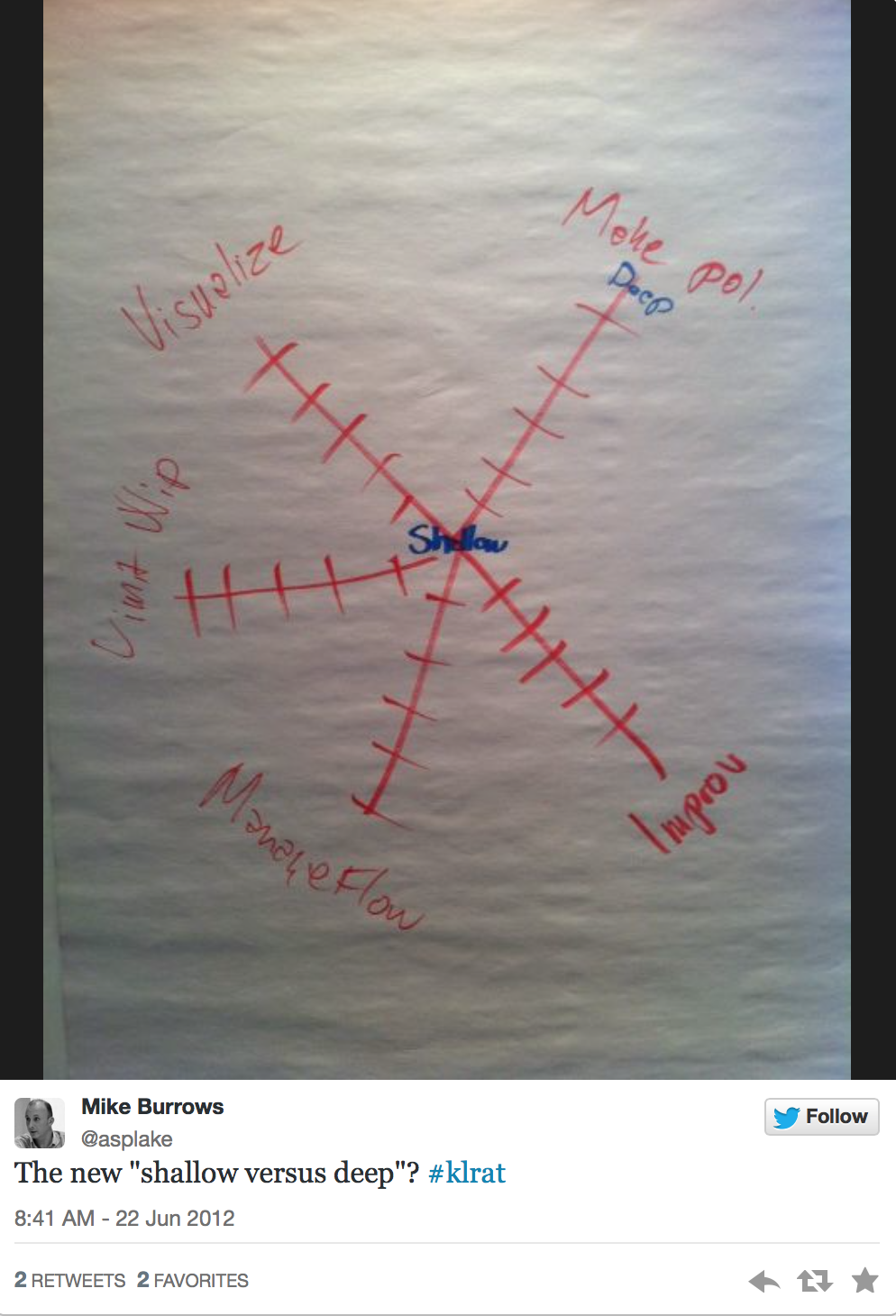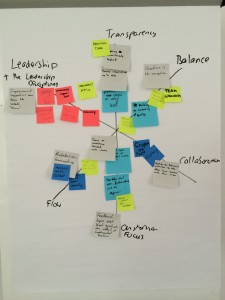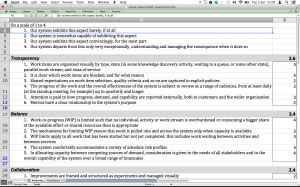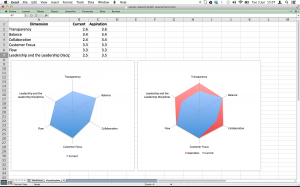[Update: do read this post in conjunction with the previous one—Pulling change through the system—I don’t make it clear enough here that the purpose of the assessment is to help generate priorities for change]
It’s fair to say that I have a complicated relationship with the Kanban Depth Assessment tool. With some excitement, I tweeted this picture from the 2102 Kanban Leadership retreat:
A few months after that tweet, I blogged How Deep is “How Deep is Your Kanban”?. Fortunately, I was able to channel my frustrations into something positive, and the eventual result was Introducing Kanban Through its Values.
Meanwhile, I find the tool useful in practice, even if flawed. That’s awkward!
Two years on from the Mayrhofen retreat we’re in Cascais, Portugal for this year’s retreat (#klrpt), and I have the opportunity to test a values-based realisation of our original idea, which I drafted only last week for the final chapter of my book (yay!).
Focusing on outcomes more than benefits, I asked participants to identify and categorise aspects or features of systems they would expect to see in mature Kanban implementations. This picture shows just a small selection:
(I should explain that “Leadership & the Leadership Disciplines” pragmatically lumps together leadership, understanding, agreement, and respect. I was actually rather gratified that Pawel Brodzinski expressed the concern that I didn’t give them sufficient individual prominence.)
Now for the measurement part. Sebastian Sanitz presented the Agile Fluency Model (Diana Larsen and James Shore), which uses a simple four-point measurement scale; Sebastian used the metaphor of learning a new language to explain what the different points on the scale feel like.
Since this morning’s workshop I have replaced my prototype’s ten-point scale with this more well-defined four point scale:
- Our system exhibits this aspect barely, if at all
- Our system is somewhat capable of exhibiting this aspect
- Our system exhibits this aspect convincingly, for the most part
- Our system departs from this only very exceptionally, understanding and managing the consequence when it does
These are applied per aspect; there are typically half a dozen or so of these per value category. I aggregate results within each category using a geometric mean (compared with a simple arithmetic mean, this gives more weight to lower/weaker scores, ie the aspects likely to be in most need of attention).
You can download the spreadsheet here: values-based depth assessment.xlsx. Some screenshots of the assessment worksheet and the radar chart visualisation are shown below. For the book, I will incorporate a time-based view from Ruben Olsen.
I honestly believe this to be an improvement on the old tool, but I know that there will be those that would still prefer to see it based on a checklist of low-level practices. I’m afraid to say that you’re unlikely to get that from me! Still, I’d be grateful for feedback, soon enough that I can accommodate it before the book’s publication (September, fingers crossed). If it takes additional work to separate the tool from the book—context matters, after all—that’s fine.




